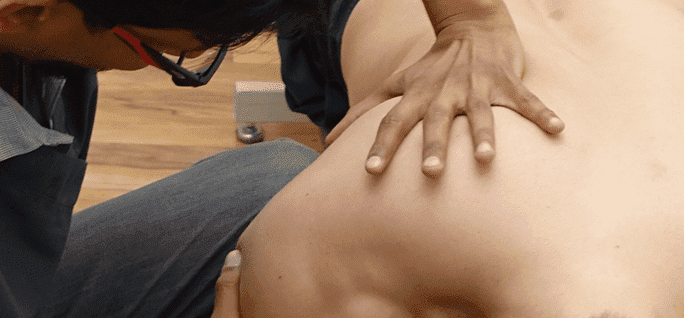
A myofascial trigger point (MTrP) is a nodule or lump in your muscle that you can usually feel by rubbing your hand over the muscle. You may even be able to see it on the surface of your muscle through your skin. However, sometimes an MTrP may be hidden behind bone or beneath other muscles.
MTrPs are taut bands of fibrous tissue that cause your muscle to shorten, and may cause pain or weakness in the affected muscle. If the MTrP compresses a nerve, pain may be felt in areas of the body that are nowhere near the location of the MTrP.
MTrPs may result from injury, repetitive overuse during exercise, surgery, poor posture, chronic stress and muscle strain. Depending on their location, MTrPs can entrap or compress nerves, causing referred autonomic issues such as pain, dizziness, nausea, digestive and eliminatory problems, and more. If an MTrP compresses a blood or lymph vessel, it can cause swelling and restrict blood flow.
There are basically three types of MTrPs: Primary, Secondary and Satellite Primary MTrPs: A primary MTrP is where the trouble begins, originating at a point where a muscle is overloaded in some way. Common causes of overload include:
Secondary MTrPs: When you fail to treat a primary MTrP, you may begin to compensate for the pain and discomfort it causes by shifting the workload to other muscles. Because you are using those muscles in ways they are unaccustomed to, and were not meant to be used, you may develop MTrPs in those muscles as well.
Satellite MTrP: A satellite MTrP develops in the referred pain region initiated by a primary trigger point. For example, if you develop a primary MTrP in your trapezius from staring at a computer all day, you may begin to feel pain along the SCM muscles in the sides of your neck. Over time, they in turn may develop MTrPs.
Once initiated, MTrPs go through two stages:
Active Stage: An active MTrP, whether primary or secondary, causes pain while at rest. The locus of the MTrP may feel tender, tight and weak. When pressure is applied, you may experience a twitch response, or you may feel referred pain in another area. The referral zone itself may even become tender.
Latent Stage: Unlike an active MTrP that is painful at rest, a latent MTrP is only painful when pressure is applied. It may be primary or secondary, but it still restricts muscle movement, and can affect joints in your spine and extremities, causing stiffness, weakness and autonomic effects. Because latent MTrPs are painless at rest, you may be unaware of them, yet they may be at the root problems like headaches, joint pain and other issues.
MTrPs are suspected to be at the root of chronic pain conditions like sciatica, low back pain, pelvic floor pain, testicular pain, hip pain, knee pain, shoulder pain, headaches, and others. Early detection and treatment are key to preventing a primary MTrP from becoming real chronic pain. At NYDNrehab we use high resolution diagnostic ultrasonography with sonoelastography to precisely locate trigger points. We then , either use extracorporeal shockwave or guided ultrasound dry needling to eliminate them. Studies show that the methods mentioned above are way more effective and do not require multiple sessions in comparison to neuromuscular massage and manual trigger point compression techniques.
Dr. Lev Kalika is a world-recognized expert in musculoskeletal medicine. with 20+ years of clinical experience in diagnostic musculoskeletal ultrasonography, rehabilitative sports medicine and conservative orthopedics. In addition to operating his clinical practice in Manhattan, he regularly publishes peer-reviewed research on ultrasound-guided therapies and procedures. He serves as a peer reviewer for Springer Nature.
Dr. Kalika is an esteemed member of multiple professional organizations, including: